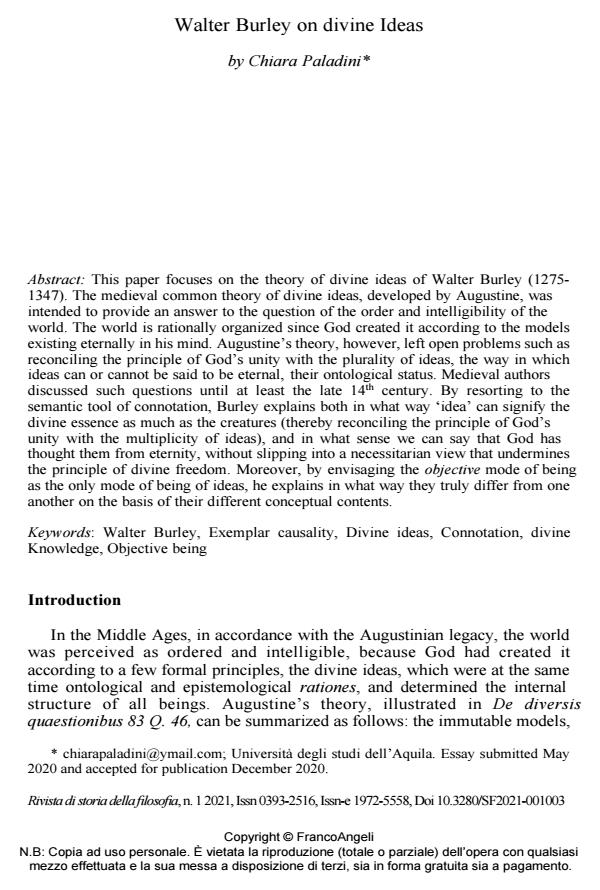Walter Burley on divine Ideas
Journal title RIVISTA DI STORIA DELLA FILOSOFIA
Author/s Chiara Paladini
Publishing Year 2021 Issue 2021/1
Language English Pages 26 P. 50-75 File size 245 KB
DOI 10.3280/SF2021-001003
DOI is like a bar code for intellectual property: to have more infomation
click here
Below, you can see the article first page
If you want to buy this article in PDF format, you can do it, following the instructions to buy download credits

FrancoAngeli is member of Publishers International Linking Association, Inc (PILA), a not-for-profit association which run the CrossRef service enabling links to and from online scholarly content.
This paper focuses on the theory of divine ideas of Walter Burley (1275-1347). The medieval common theory of divine ideas, developed by Augustine, was intended to provide an answer to the question of the order and intelligibility of the world. The world is rationally organized since God created it according to the models existing eternally in his mind. Augustine’s theory, however, left open problems such as reconciling the principle of God’s unity with the plurality of ideas, the way in which ideas can or cannot be said to be eternal, their ontological status. Medieval authors discussed such questions until at least the late 14th century. By resorting to the semantic tool of connotation, Burley explains both in what way ‘idea’ can signify the divine essence as much as the creatures (thereby reconciling the principle of God’s unity with the multiplicity of ideas), and in what sense we can say that God has thought them from eternity, without slipping into a necessitarian view that undermines the principle of divine freedom. Moreover, by envisaging the objective mode of being as the only mode of being of ideas, he explains in what way they truly differ from one another on the basis of their different conceptual contents
Keywords: Walter Burley, Exemplar causality, Divine ideas, Connotation, divine Knowledge, Objective being
Chiara Paladini, Walter Burley on divine Ideas in "RIVISTA DI STORIA DELLA FILOSOFIA" 1/2021, pp 50-75, DOI: 10.3280/SF2021-001003